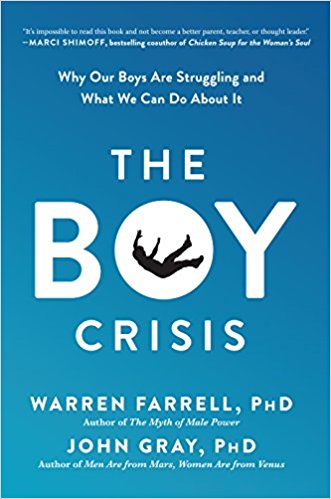![]()
Courts not answer for kids, critics say
Treating youths more chaotic,' advocate says
Ottawa wants to hold 10-year-olds liable for actions
The Toronto Star, JESSICA LEEDER, STAFF REPORTER, Aug. 16, 2006
Slotting troubled 10-year-olds into the criminal justice system creates unnecessary hurdles for kids who need mental-health treatment to move off a criminal course, says Ontario's child advocate.
Judy Finlay said in an interview yesterday that the federal justice minister's suggestion that children as young as 10 who break the law be brought to court would only serve to make treatment for those youths more "chaotic and fragmented" in Ontario.
"Kids need to stay out of the criminal justice system," she said. "We're trying to move in exactly the opposite direction."
Since Justice Minister Vic Toews said Monday that the Youth Criminal Justice Act might need to be changed so 10- and 11-year-olds who "run afoul of the law" can be brought to court, criticism from child advocates, lawyers and juvenile justice experts has steadily mounted.
The law now covers youths from 12 to 17.
While many agree with Toews that efforts to reach troubled youth under 12 and prevent them from developing criminal behaviour must be stepped up, few experts think the justice system is the right avenue.
Finlay said her office has been doing extensive research into the subject of young offenders, including interviewing police, Crown attorneys and judges.
"To put kids before a judge and have a judge determine where the kids will go ... the judges are lost," she said. "Judges say they don't know where to send the kids."
Part of the problem is a lack of interconnectedness among social programs offered to the youngest offenders.
Dr. Leena Augimeri is the director of the Centre for Children Committing Offences at Toronto's Child Development Institute, which specializes in research and early intervention for youths under 12.
She said it's like "finding a needle in a haystack" when it comes to finding the right programs to help troubled children under 12.
Still, Augimeri said the courts are not the answer.
"Criminalization equals punishment, and we know that doesn't work," she said.
Martha Mackinnon, executive director of the legal-aid organization Justice for Children and Youth, said the brains of most offenders under age 12 are not developed enough for the court system to be effective.
"Deterrents as a principle don't work for young people. Most of their conduct, whether it's good or bad, is impulsive," she said.
"There aren't 10-year-olds who sit around and say, `Oh, if I got caught, I might have to go to court.'"
Mackinnon said criminal law is too powerful a tool to use on children as young as 10 and 11.
At that age, she said, many can be rehabilitated, and will respond better to treatment if they and their families are given access than to punishment.
"Going to court is not a good predictor of not going there again," she said.
Fred Matthews, a veteran psychologist at Central Toronto Youth Services, said behavioural change is more effective if it stems from a community health model that can address all the factors that lead to troubled youths.
"You've got to address the context of the behaviour," he said. "Otherwise, we're just standing at the end of an assembly line, catching kids as they come off."
Finlay said she worries resources have already been squandered in the court system. "There are lots of kids in the system who don't belong there," she said, adding that mental-health issues left unresolved are often at the root of youths' problems.
Until mental-health services are improved to help troubled youths, Finlay said, "you're always going to have kids falling through the cracks."
TEDx Dr Warren Farrell
TEDx - The Boy Crisis: Why Our Boys Are Struggling and What We Can Do About It
One of the foremost speakers and thinkers on gender issues
It's a crisis of education. Worldwide, boys are 50 percent less likely than girls to meet basic proficiency in reading, math, and science.
It's a crisis of mental health. ADHD is on the rise. And as boys become young men, their suicide rates go from equal to girls to six times that of young women.
It's a crisis of fathering. Boys are growing up with less-involved fathers and are more likely to drop out of school, drink, do drugs, become delinquent, and end up in prison.
It's a crisis of purpose. Boys' old sense of purpose-being a warrior, a leader, or a sole breadwinner-are fading. Many bright boys are experiencing a "purpose void," feeling alienated, withdrawn, and addicted to immediate gratification.
So, what is The Boy Crisis? A comprehensive blueprint for what parents, teachers, and policymakers can do to help our sons become happier, healthier men, and fathers and leaders worthy of our respect.

Why boys are in trouble
Boys have been painted as the bad guys in the push to encourage girls to succeed, leaving many young men feeling confused and alienated, wondering what they did wrong
The Associated Press
January 5, 1999
According to psychologist and author William Pollack, 'sports are the one arena in which many of society's traditional strictures about masculinity are often loosened, allowing boys to experience parts of themselves they rarely experience elsewhere.'
When Harvard Medical School psychologist William Pollack administered a test to a group of 150 teenaged boys a few years ago, the results were shocking.

The Boy Crisis Book
The Boy Crisis: Why Our Boys Are Struggling and What We Can Do About It
Authors- Waren Farrell PhD and John Gray PhD
What is the boy crisis?
It's a crisis of education. Worldwide, boys are 50 percent less likely than girls to meet basic proficiency in reading, math, and science.
It's a crisis of mental health. ADHD is on the rise. And as boys become young men, their suicide rates go from equal to girls to six times that of young women.
It's a crisis of fathering. Boys are growing up with less-involved fathers and are more likely to drop out of school, drink, do drugs, become delinquent, and end up in prison.
It's a crisis of purpose. Boys' old sense of purpose-being a warrior, a leader, or a sole breadwinner-are fading. Many bright boys are experiencing a "purpose void," feeling alienated, withdrawn, and addicted to immediate gratification.
So, what is The Boy Crisis? A comprehensive blueprint for what parents, teachers, and policymakers can do to help our sons become happier, healthier men, and fathers and leaders worthy of our respect. Read More ..

Health Canada Publication
The Invisible Boy: Revisioning the Victimization of Male Children and Teens
"... the existence of a double standard in the care and treatment of male victims, and the invisibility and normalization of violence and abuse toward boys and young men in our society.
Despite the fact that over 300 books and articles on male victims have been published in the last 25 to 30 years, boys and teen males remain on the periphery of the discourse on child abuse.
Few workshops about males can be found at most child abuse conferences and there are no specialized training programs for clinicians. Male-centred assessment is all but non-existent and treatment programs are rare. If we are talking about adult males, the problem is even greater. A sad example of this was witnessed recently in Toronto. After a broadcast of The Boys of St. Vincent, a film about the abuse of boys in a church-run orphanage, the Kids' Help Phone received over 1,000 calls from distraught adult male survivors of childhood sexual abuse. It is tragic in a way no words can capture that these men had no place to turn to other than a children's crisis line."
American Psychological Association
Dating Violence Statistics in the United States
Nearly one in 10 girls and one in 20 boys say they have been raped or experienced some other form of abusive violence on a date, according to a study released Sunday at the annual meeting of the American Psychological Association.
![]()
The mean T-shirt: From the Stupid Factory
Todd Goldman says his popular boy-bashing T-shirts are simply funny.
So why are retailers having second thoughts? Read More ..

Why boys are in trouble
Boys have been painted as the bad guys in the push to encourage girls to succeed, leaving many young men feeling confused and alienated, wondering what they did wrong
The Associated Press
According to psychologist and author William Pollack, 'sports are the one arena in which many of society's traditional strictures about masculinity are often loosened, allowing boys to experience parts of themselves they rarely experience elsewhere.'
When Harvard Medical School psychologist William Pollack administered a test to a group of 150 teenaged boys a few years ago, the results were shocking.
![]()
Where the boys are
The Globe and Mail
February 1, 2003
Academically, boys across the country are lagging behind the girls, but a Montreal public school has seen dramatic improvement by separating the sexes in classes. It allows teachers to tailor curriculum and style to suit each sex. The result? The number going on to college has nearly doubled. INGRID PERITZ reports
MONTREAL -- The teenage girls at James Lyng High School like to flirt with boys. They like to tease them, joke with them, even date them sometimes. But attend class with them? As the giggling girls in one math class this week might say, "Gross."
Luckily, they don't have to. Coed James Lyng splits boys and girls up at the classroom door. The division of the sexes is credited with helping turn a faltering inner-city high school into an education success story.


